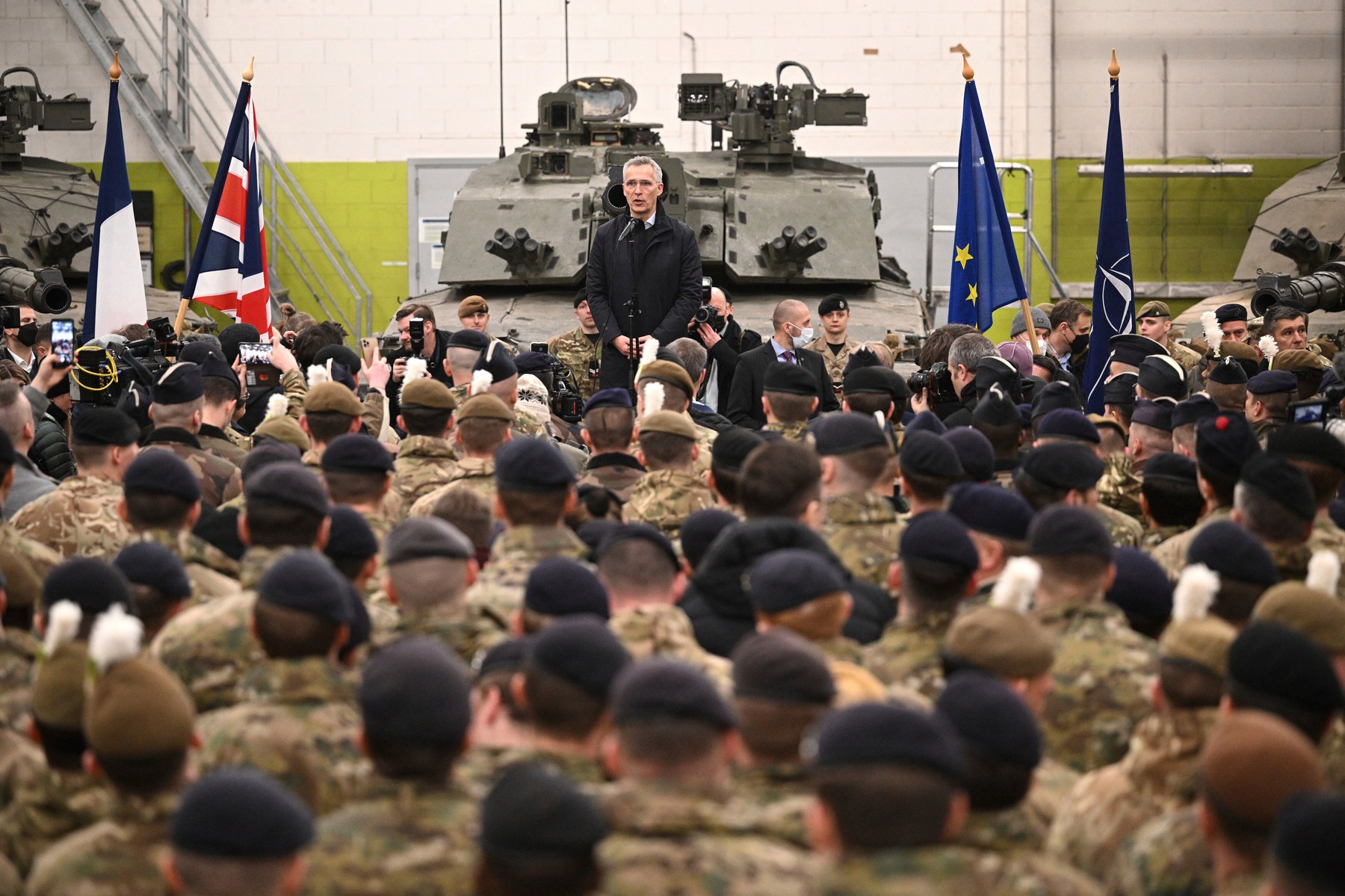
NATO’s next summit in July in Vilnius is set for a “back to the future” moment, where leaders are expected to approve thousands of pages of secret military plans detailing for the first time since the Cold War how the alliance will respond to a Russian attack, Reuters reported.
The move underscores a fundamental paradigm shift: NATO has seen no need for large-scale defense plans for decades, as it fought smaller wars in Afghanistan and Iraq and saw post-Soviet Russia as no longer an existential threat.
But after Russian President Vladimir Putin decided last year to launch Europe’s bloodiest war since 1945 on its borders, NATO is now warning that it must be ready long before a conflict like that erupts against an adversary like Moscow.
“The fundamental difference between crisis management and collective defense is this: our adversary, not us, determines the timing of events,” said Rob Bauer, one of NATO’s top military officials.
“One must be prepared for the fact that a conflict can break out at any moment,” he emphasizes.
What are the new military plans developed by NATO
In presenting what it calls its regional plans, NATO will also provide recommendations to member states on how to modernize their armed forces and logistics systems.
“Allies will know exactly what forces and capabilities are needed, including where, what and how to deploy them,” Jens Stoltenberg said of the secret documents that would allocate certain troops to defend certain regions, as was the case during the Cold War.
The official adoption of the new plans essentially formalizes the process set in motion by Russia’s illegal annexation of Crimea in 2014, when Western allies deployed combat troops in the east for the first time, with Britain, Canada and Germany each playing a crucial role in one of the 3 Baltic states.
While many things resemble NATO’s pre-1990 military structure, some key factors have changed for the alliance, which has since expanded some 1,000 km to the east and grown from about a dozen to 31 members.
Only Finland’s formal acceptance last month doubled NATO’s border with Russia to about 2,500 km, forcing a more flexible approach to deployment than in the past, when Germany was seen as the main battleground in the event of a Soviet attack.

Intercontinental ballistic missiles paraded on Red Square (PHOTO: Yuriy Kadobnov / AFP / Profimedia Images)
To what extent a possible conflict with Russia will differ from the one imagined during the Cold War
But the alliance is no longer preparing for full-scale nuclear war against Moscow and its allies, most of whom are now NATO members.
“We cannot imagine a war like the Cold War, where allied forces (…) would be hit simultaneously with large-scale attacks from [țărilor] of the Warsaw Pact,” says Ian Hope, a historian at the Supreme Headquarters Allied Powers Europe (SHAPE).
It talks about the danger now in regional conflicts that require the rapid deployment of forces.
At the same time, the Internet, drones, hypersonic weapons and the rapid flow of information pose new challenges.
“The good news is that we are discussing battlefield transparency. With all the satellites, with all the information we have, we see a crisis brewing,” said Lt. Gen. Hubert Cottereau, SHAPE’s deputy chief of staff.
“In the case of Ukraine, we had all the indicators quite early,” he adds.
This operational transparency is one of the reasons why NATO, contrary to the demands of the Baltic states, does not see an immediate need for a significant increase in the number of troops on its eastern flank.
“The more troops you put on the border, it’s like having a hammer. At some point, you want to find a nail,” Cottereau warned. “If the Russians accumulate troops on the border, it worries us, and if we accumulate new troops on the border, it worries them,” the military officer added.

Stoltenberg with NATO soldiers (PHOTO: Leon Neal / Associated Press / Profimedia Images)
Challenges facing the North Atlantic Alliance
However, NATO faces an enormous task of significantly improving its preparedness for potential conflict.
Last year, the alliance agreed to put 300,000 troops on high alert, up from 40,000 in the past.
Weaknesses in member states’ ability to produce sufficient arms and ammunition are highlighted by difficulties in meeting Ukraine’s demands, and NATO must also modernize its long-neglected logistics, which are needed to move troops quickly by rail or road.
The need to finance the implementation of regional plans is one of the reasons why Stoltenberg asked the leaders to increase the alliance’s military spending target, which is another topic of discussion in Vilnius.
NATO officials believe it will be several years before the plans are fully implemented, although they stress that the alliance can jump into battle immediately if necessary.
“We are ready to fight tonight. You know, you’re never ready enough. Never,” emphasizes Cottereau.
“If we have to, we have to be ready to fight tonight with what we have,” he added.
Follow the latest events of the 449th day of the war in Ukraine LIVETEXT on HOTNEWS.RO.
Source: Hot News
James Springer is a renowned author and opinion writer, known for his bold and thought-provoking articles on a wide range of topics. He currently works as a writer at 247 news reel, where he uses his unique voice and sharp wit to offer fresh perspectives on current events. His articles are widely read and shared and has earned him a reputation as a talented and insightful writer.